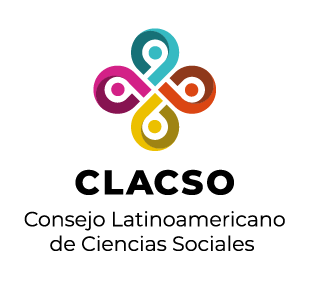Red de Bibliotecas Virtuales de Ciencias Sociales en
América Latina y el Caribe

Por favor, use este identificador para citar o enlazar este ítem:
https://biblioteca-repositorio.clacso.edu.ar/handle/CLACSO/229463| Título : | Las falsas mujeres a través del lente. Retratos de hombres travestidos en Medellín, 1906-1928. |
| Autor : | Cabrera Ardila, Marta Jimena Pérez Benavides, Amada Carolina |
| Palabras clave : | Género;Homosexualidad;Travestismo;Fotografía;Criminología;Benjamín de la Calle;Retratos;Fotografía judicial;Gender;Homosexuality;Transvestism;Photography;Criminology;Benjamín de la Calle;Portraits;Judicial photography;Historia - Tesis y disertaciones académicas;Homosexualidad masculina;Fotografía legal;Travestismo |
| Editorial : | Pontificia Universidad Javeriana Historia Facultad de Ciencias Sociales |
| Descripción : | A principios del siglo XX las «falsas mujeres» transitaron por las calles de Medellín encontrando un lugar de acogida en el recién construido barrio Guayaquil, un distrito urbano que rápidamente se tejió como un hábitat de indeseados sociales. Éstas mujeres «falsas» fueron bautizadas así por el colectivo social con el objetivo de apuntar y subrayar su travestismo, una categoría que quiere transmitir una inversión, actuación o personificación. Los primeros registros fotográficos de hombres travestidos en Colombia surgen precisamente en Antioquia en calidad de retratos, capturados por el fotógrafo antioqueño Benjamín de la Calle. El presente trabajo los toma como punto de partida para indagar acerca de los imaginarios sociales en torno a los sujetos retratados y sus condiciones de existencia, las imágenes aquí presentadas en apariencia se visualizan como simples fotos de estudio, no obstante, son fuentes invaluables al ser interpretadas bajo la luz de la historia de la homosexualidad, la biografía del fotógrafo, la historia del retrato, e incluso, de la criminología. At the beginning of the twentieth century the "false women" walked through the streets of Medellín, finding a place of tolerance in the recently built Guayaquil neighborhood, an urban district that quickly became a habitat for social outcasts. These "fake" women were baptized by the social body with the aim of pointing and highlighting their transvestism, a category that wants to transmit an inversion, acting or personification. The first photographic records of transvestite men in Colombia appear precisely in Antioquia, as portraits captured by the native photographer, Benjamín de la Calle. The present work takes them as a starting point to inquire about the social imaginaries around the subjects portrayed and their conditions of existence, these images in appearance are visualized as simple studio photos, however, they are invaluable sources to be interpreted amongst the light of the history of homosexuality, the photographer’s biography, the history of portraits, and even of criminology. Historiador (a) Pregrado |
| URI : | https://biblioteca-repositorio.clacso.edu.ar/handle/CLACSO/229463 |
| Otros identificadores : | http://hdl.handle.net/10554/39845 instname:Pontificia Universidad Javeriana reponame:Repositorio Institucional - Pontificia Universidad Javeriana repourl:https://repository.javeriana.edu.co |
| Aparece en las colecciones: | Facultad de Ciencias Sociales - FCS/PUJ - Cosecha |
Ficheros en este ítem:
No hay ficheros asociados a este ítem.
Los ítems de DSpace están protegidos por copyright, con todos los derechos reservados, a menos que se indique lo contrario.